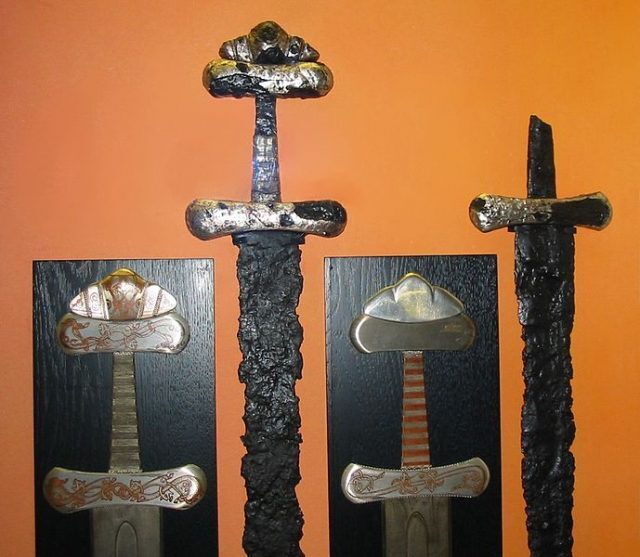Hundreds Of Viking Sword Fragments Discovered In Estonia

Hundreds Of Viking Sword Fragments Discovered In Estonia
There’s no sword like Viking swords. During the period between 800-1200 AD, many Scandinavians started to leave their lands for a better life.
In search of spoils and resources the Vikings took to the sea and set off raiding the coastal areas. Around the moment, Vikings were raided, traded, and even settling across the British Isles, and throughout most of Europe. They went on to Newfoundland, Russia, Iceland and Greenland as well.
An unusual finding has been reported last year by ERR, the English-language Estonian Public Broadcasting service. Two caches containing fragments of about 100 Viking swords were found by archeologists.
The discovery was made in the northern part of the country, in the territory of the former Estonian country of Raval.
The fragments were in two different caches, but the locations were close to each other. There were a multitude of items inside, most of which were fragments of broken swords and a few spearheads.

Archaeologist Mauri Kiudsoo, keeper of the archaeological collection of Tallinn University, said that the two sites were only about 80 meters apart. The swords appear to date from the middle part of the 10th century and were probably used as cenotaphs, grave markers for people who were actually buried somewhere else, such as those who fell in battle and had to be buried where they were or those who died while elsewhere on missions of trade or diplomacy.
The reason the swords were in pieces, according to Kiudsoo, is that the practice of the time involved burying weapons that were broken or otherwise beyond use.

Despite the fact they’re in pieces, historians could still easily identify what sort of weapons they were by looking at the shape of the grips. The grips revealed that the swords were H-shaped, double edged swords of the type that was most common during the Viking era. Hundreds of swords of this type have already been found in various parts of Northern Europe.

By 1991, eight more-or-less intact examples of this type of sword had already been discovered in Estonia, and the number has risen to around 100 in the years since then. Such relics are usually discovered along the country’s northern coastline, near an important trade route for the Vikings.
Historically, Viking warriors were known to raid the area which is now Estonia, according to Ancient Origins, and they erected hill forts and outposts for trade in the vicinity.
They were always located near the coast, however, as the marauding Vikings never made any significant advancement into the country’s interior, which was held by Finnic tribes.
This find represents the largest of such caches ever found in Estonia, but, more importantly, according to Kiudsoo, the grips were what allowed archaeologists to determine what type of weapons they were, and, by extension, to have firm proof that the H-shaped weapons were in use in the area during that time.
By the middle of the 10th century, the Danes had been Christianized and united under one king, according to History; at the same time, a second Viking age began with increased large scale raiding on the coasts of Europe and Britain, driven by successful military action in a number of parts of Europe and taking advantage of political instability.
Estonia served as a staging post for the trade routes that went through Russia to Persia. The Vikings first came to raid, but eventually they ended up establishing trade relationships with the natives and even established some permanent trading posts.
Perhaps finding the two caches of sword fragments will stimulate further investigation and excavation in the area, leading archaeologists to new finds and a deeper understanding of both the Vikings and of what life was like in Estonia during that period of time.
Subscribe to our newsletter!